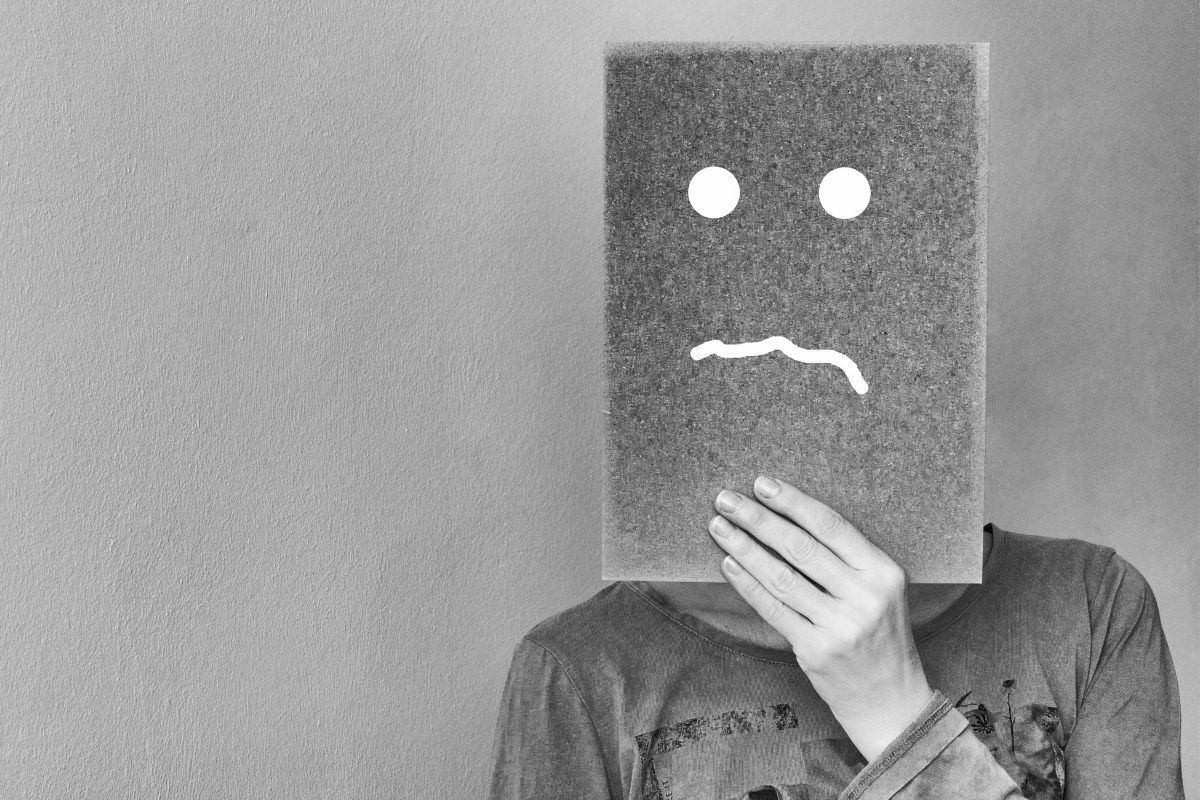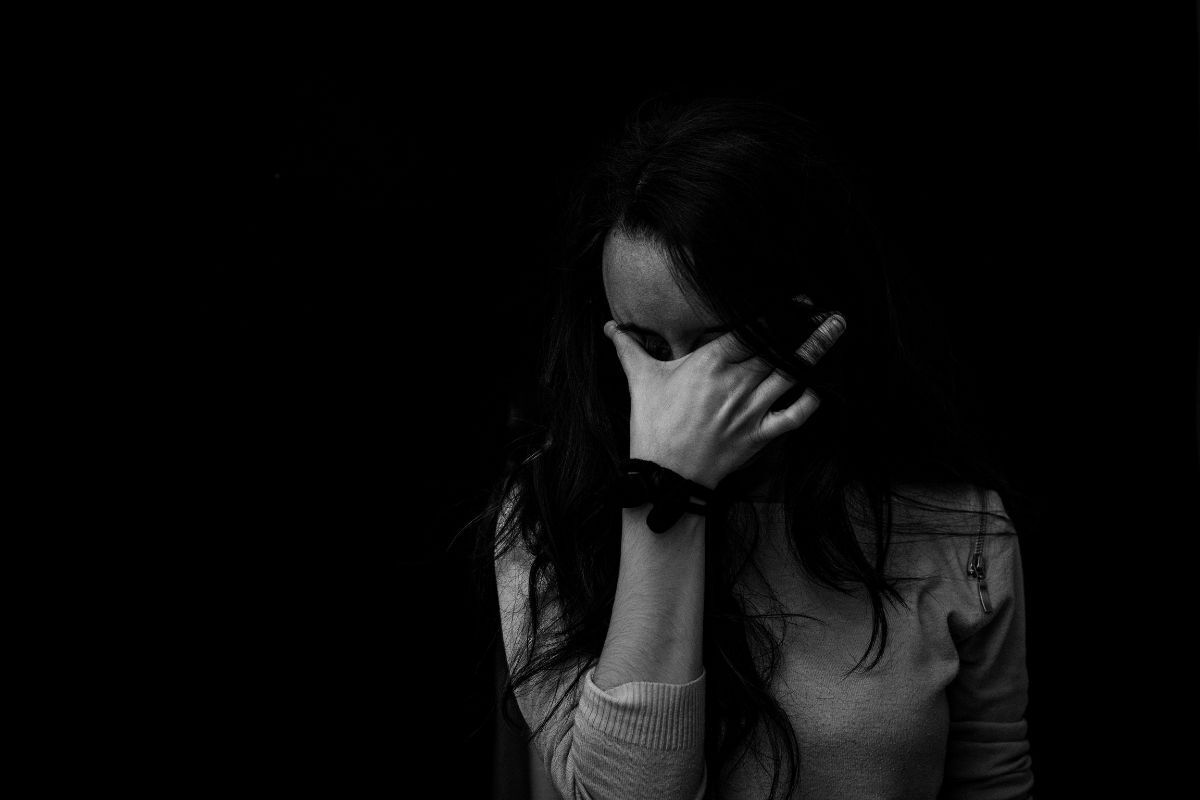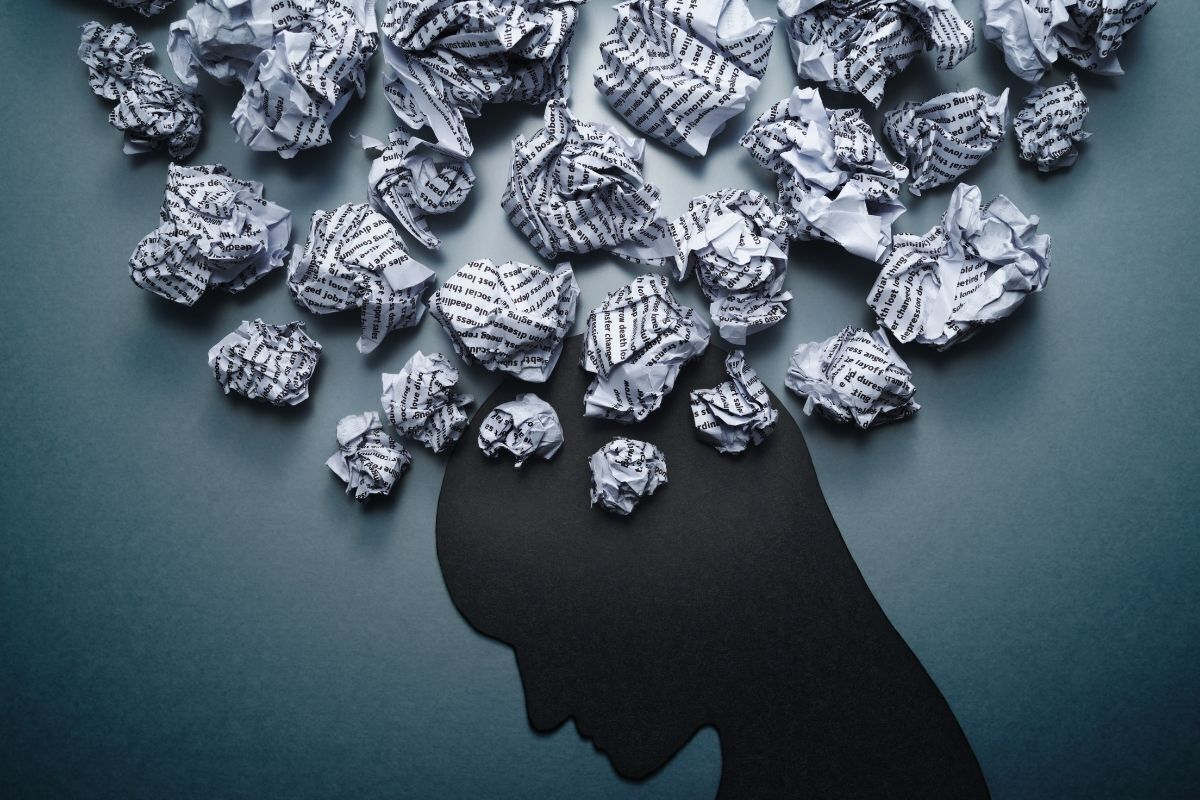Table of contents
General considerations about Persistent Depressive Disorder

It's not just today that the decay of societies in many ways has proven to be completely detrimental to mental health for people of all ages. In this era, disorders such as depression and anxiety have been consolidated as serious problems that need attention.
Because of its rapid and voracious spread, depression, for instance, has gained "branches" of action, so to speak. One of these known branches is the so-called Persistent Depressive Disorder, or Dysthymia, as it is also called by specialists.
This article was created in order to explain what is Dysthymia and make people aware of the risks and implications of this disorder, which often goes unnoticed. Continue reading!
Understanding Persistent Depressive Disorder

In this first article, we talk a little more about the details that define Persistent Depressive Disorder. Read on to find out what dysthymia is, what its symptoms are, how it affects the quality of life of the affected individual and other important information!
What is Persistent Depressive Disorder or Dysthymia?
Persistent depressive disorder, which is also known as dysthymia, is nothing more than a kind of depression that presents milder and more intense symptoms, which usually last longer than those seen in "conventional depression".
Individuals affected by Dysthymia are always in a bad mood, have pessimistic views about almost everything and are very difficult when it comes to relationships. The main problem involving Persistent Depressive Disorder is that it is confused with personality traits of the person or with normal mood swings, especially in women.
But those who suffer from the disorder have a noticeable change in their personality, becoming a more bitter person "suddenly". This disorder can last for years without changing.
Difference between major depressive disorder and persistent depressive disorder
The Major Depressive Disorder, or depression, is characterized by a state of brutal apathy. Affected individuals usually present lack of energy, pale appearance, accentuated gain or loss of body fat, decreased prosody (very quiet person who speaks low), indisposition and lack of pleasure for activities once loved.
Dysthymia, on the other hand, is basically characterized by changes in mood and way of thinking of the affected person. This disorder adjacent to depression can either be the result of a depressive period or it can appear "out of the blue", lasting for several years.
As differences between depression and Persistent Depressive Disorder, we can mention the overwhelming and remarkable arrival of depression, which can be identified soon and lasts a short time when treated correctly. On the other hand, Dysthymia tends to last at least two years and has milder symptoms, which makes its detection difficult.
Difference between Cyclothymia and Dysthymia
While Dysthymia is a psychological disorder that has symptoms similar to depression, Cyclothymia can be confused with another disorder: bipolar disorder. Basically, individuals affected by Cyclothymia present "crises" with sudden mood swings.
At one moment they are totally euphoric and happy for no apparent reason, and at another moment they can be seen deeply sad and depressed, sometimes even crying. In this way, it is possible to distinguish the carriers of both disorders by the "duration" of the bad mood.
While the person who has Dysthymia may be seen to be moody and behaving pessimistically all the time, the person who has Cyclothymia may even be sad, but within a few minutes in the future may exhibit a state of contagious joy for no reason.
The main symptoms of Dysthymia
There are a few more symptoms that can be observed in the behavior of the person who carries Dysthymia. In addition to the already mentioned bad mood and pessimism, the individual may present the following symptoms:
- Deep despondency about anything;
- Reports of anguish and sadness related to small everyday things;
- Drop in concentration levels for studies or work;
- Recurrent social isolation;
- Expression of feelings of guilt for things that are out of your hands.
How does Dysthymia affect quality of life?
Although it is a less aggressive disorder than depression and chronic anxiety, for example, Dysthymia has a considerable potential for harm and can affect the quality of life of the person affected.
Because they are always in a bad mood and are melancholic and pessimistic, dysthymics have immense difficulty relating to other people and carrying out daily activities.
To get an idea, there are reports of people with Dysthymia who are afraid to talk to other people because they think they will bother them or something similar. The disorder can cause the individual to lose job opportunities, love and family relationships and even develop other diseases related to the sedentary lifestyle and social isolation that follows.
Persistent Depressive Disorder risk groups

Like any disorder, Persistent Depressive Disorder also has risk groups. Generally, women and people who have had depression or who come from families with a history of the disease can develop Dysthymia more easily. See why!
Women
Women, unfortunately, are more prone to develop psychological disorders than men. The reason for this is the well-known increased response that females have to episodes of stress and heightened emotions.
In addition, women can suffer from hormonal imbalances caused by the menstrual cycle or by disorders in the thyroid gland. The irregularity in the release of neurotransmitters linked to mood swings can also weigh in this situation.
Thus, women always need extra attention in relation to noticing the symptoms and identifying Dysthymia, which is a very camouflaged disorder.
Individuals with a history of depression
Those who have already had one or more depressive periods in their lives may also be more prone to develop Persistent Depressive Disorder. It turns out that the main symptoms of this psychological problem are nothing more than the milder persistence, so to speak, of depression symptoms.
On the other hand, individuals who have already faced depression have less resistance to psychological problems and may succumb more easily to changes that cause Dysthymia and other ailments, such as chronic anxiety, for example.
The diagnosis of Persistent Depressive Disorder

There are simple ways to identify and treat Persistent Depressive Disorder, so everyone who suspects they have the disorder should seek help. Learn about the methods used to diagnose and treat Dysthymia!
How is Dysthymia diagnosed?
The diagnosis of the Persistent Depressive Disorder is not usually easy because, besides the fact that this disorder "camouflages" itself very well, the affected people hardly realize or recognize that they have the problem and need help.
But in cases of suspicion, when a professional is requested, the psychiatrist or psychologist should assess whether the person has had symptoms in mood, pessimistic thoughts, etc., for more than two years.
In addition, generally, the occurrence or not of cases of depression in the patient's family or in the person's own life also help to identify the disorder. It is worth remembering that, if left untreated, Dysthymia can trigger cases of severe depression in the future.
Is Persistent Depressive Disorder curable?
It is possible to state that Dysthymia can be cured as long as all the protocols established by a psychiatrist or psychologist are obeyed by the affected person. Even when the treatment is well done, the person gets rid of the symptoms completely and leads a normal life in a short time.
Relapses of Persistent Depressive Disorder after treatment are rare, and when they do occur, they are much milder and more transient.
The initial support in the treatment
One of the most important phases in the treatment of Dysthymia is its beginning and the support that is provided to the affected patient. In this period, the person needs to be closely monitored by the doctor, often in contacts that go beyond the office and that need to happen at least twice a week.
The reason for this closer relationship is the need to re-educate the patient for daily activities with small efforts that help in the treatment itself.
In this context, it is also important to talk about the patient's family, who are certainly suffering along with the person. These individuals also need support and help to get through the moment together with those who have Dysthymia.
Psychotherapy
Psychotherapy is a technique used to, among other things, map the triggers responsible for the symptoms experienced by people who have Dysthymia or any other depressive disorder.
When applying psychotherapy, the medical specialist will "navigate" the patient's behaviors and daily life in order to find the source of the problem, which can be treated with psychotherapy itself. Thus, it can offer alternative paths to serious issues in the patient's life, as well as be supported by specific medications.
The medicines
When there is a need to use drugs for the treatment of Persistent Depressive Disorder, the range of options opens up in an even greater way. There are more than eight classes of drugs indicated for this purpose.
In the case of Dysthymia, in which the person's mood disorders are more evident, preliminary exams may indicate low levels of serotonin and other neurotransmitters responsible for the feeling of well-being.
Thus, medications such as serotonin modulators or selective serotonin reuptake inhibitors may be the option to be used.
Electroconvulsive therapy
The so-called electroconvulsive therapy, also known as ECT, is a more incisive method that is only prescribed in cases of more severe depression, in which neither conventional therapies nor the use of medications were able to reverse the patient's situation.
This type of therapy is prescribed and applied by psychiatrists. In it, the person is subjected to basically suffer shocks to the head and focal points of contact with structures of the nervous system.
The goal is to realign the electrical currents in the brain of the person with the disorder, and the procedure requires 5 to 10 sessions to yield results. During each of the sessions, the patient remains sedated with general anesthesia.
Phototherapy and other methods
Phototherapy is a kind of treatment in which the person afflicted by Persistent Depressive Disorder is exposed to intense beams of artificial light that hopefully realigns the cells of the person's entire central nervous system. In addition to phototherapy, there are some alternative treatments, such as:
Use of psychostimulants: drugs that are often classified as antidepressants, such as dextroamphetamine;
Treatments with medicinal herbs: Popular wisdom and even some scientific studies claim that many plants can stabilize the behavior of neurotransmitters responsible for mood swings, which is the case of St. John's wort, fennel and many other herbal medicines;
Therapies that involve stimulation of the nervous system: often, the physical structure of the nervous system needs to be treated for Dysthymia to go away. in this matter, treatments such as vagus nerve stimulation or deep brain stimulation may be indicated;
Group activities: There are several groups and forums where people with dysthymia meet to discuss their lives. Letting off steam and telling others a little more about what you are going through also serves as therapy.
Types of Depressive Disorders

To finish our article, we brought explanations about six more types of depressive disorders. Learn what disruptive mood dysregulation disorder, postpartum depression, bipolar disorder and others are below!
Disruptive mood dysregulation disorder
Disruptive Mood Dysregulation Disorder (TDDH) is a disorder that affects children between the ages of 2 and 12, usually. In it, you may notice bouts of misbehavior that may include sudden bouts of anger or despair and constant irritability and discontent.
It is worth noting that to be diagnosed as the disorder itself, symptoms need to occur at least three times a week, being totally disproportionate to the situation in which they occur and manifesting in various types of environments.
ADHD can be caused by family problems to which the child is exposed and other factors of the living environment. The initial diagnosis can be made by a pediatrician who knows the child and, once the problem is identified, the child will be referred to a psychiatrist.
The specialist in problems of the mind then can administer treatment consisting of some sort of therapeutic method and the use of medications.
Seasonal affective disorder
Seasonal affective disorder, also known as seasonal depression, summer depression or winter depression, is a psychological dysfunction caused by climate change.
The affected individuals usually present the classic symptoms of depression when the season of the year changes, especially to autumn or winter. If a person notices that they or a family member presents depressive symptoms with the arrival of new seasons of the year, and that this condition repeats itself for more than a year, they should seek help.
Seasonal affective disorder can be identified and treated by a psychologist or psychiatrist, and treatment involves phototherapy, psychotherapy and the use of medication in some more specific cases.
Postpartum Depression
Postpartum depression is, as the name implies, a disorder that occurs after a woman gives birth. This disorder can become serious, causing serious problems for the woman and her baby. Including, if not identified and treated in time, postpartum depression can cause a rupture in the relationship between mother and child.
The causes of postpartum depression vary widely and are usually related to other depressive disorders. The symptoms of this dysfunction are the same as those of conventional depression and can be identified by a psychologist or psychiatrist.
To help the new mom overcome postpartum depression, the support of the child's partner and father or the family is indispensable. In addition, treatment with medications and occasional therapies are the key to change the picture completely.
Premenstrual dysphoric disorder
Premenstrual dysphoric disorder or premenstrual dysphoric disorder is a psychological imbalance that can affect about 10% of women worldwide today.
This dysfunction is characterized by signs of extreme discomfort and emotional lack of control of women in premenstrual period. Thus, this problem becomes one of the most difficult to identify, because it is very similar to what is seen in the common PMS.
To be more certain that a woman is afflicted by premenstrual dysphoric disorder, it is necessary that her "PMS" is very unusual for at least 1 year. It is worth remembering that during menstruation and after the menstrual period, the woman returns to act normally.
The problem can affect from teenagers who have just had their menarche to mature women who are about to have menopause. After the cessation of menstruation, there is no more risk of presenting symptoms.
Bipolar Disorder
Bipolar disorder, also known as bipolar disorder or manic-depressive illness, is a well-known but not so common disorder. It is characterized by sudden and divergent changes in the affected person's mood.
At one moment, the individual may be manic, that is, extremely agitated, enthusiastic and full of energy. However, a while later, the person may be depressed, showing total apathy and despondency.
There are some types of bipolar disorder and several possible causes for the problem. Anyway, the best way for affected individuals is to seek treatment with a psychologist or psychiatrist. The specialist will prescribe treatments that include the use of medications and psychotherapy in a combined manner.
Psychotic depression
So-called psychotic depression is a more severe phase or manifestation of unipolar depression, also called major depression, which is the most common manifestation form of the disease.
In psychotic depression, the affected individual does not show the classic symptoms of the disease, such as deep sadness and persistent despondency, for example. Instead, the person has bouts of delusions and hallucinations, whether awake or asleep.
If these symptoms persist for more than 2 weeks, a psychiatrist or psychologist needs to be consulted. When psychotic depression is confirmed, the treatment will consist of the administration of antidepressants and antipsychotics, as well as intensive therapies to stabilize the person's mood.
When diagnosed with persistent depressive disorder, do not hesitate to seek professional support!

As we have seen throughout this article, the Persistent Depressive Disorder is not something that should be ignored. Like other mental disorders, this problem can seriously interfere with the quality of life of the person affected.
So, if you or someone in your family have symptoms of the disorder, seek help. When the condition of Dysthymia is confirmed, start treatment so that, as soon as possible, you will be free of this problem. Also, take care of your mental and physical health from the information given in this article!

